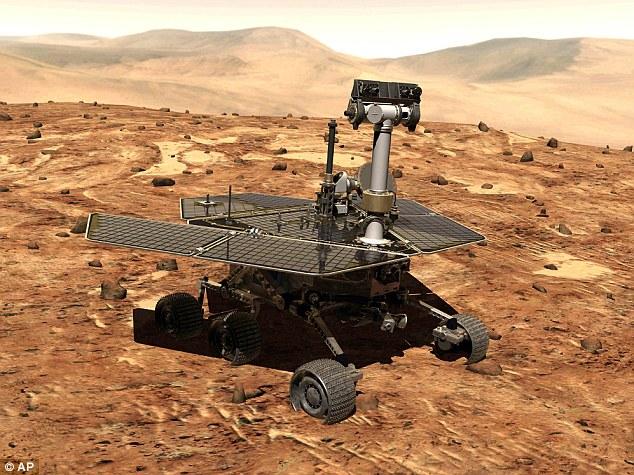ISS - Expedition 54 Mission patch.
Feb. 17, 2018
The crew members aboard the International Space Station spent the week conducting science, unloading a newly-arrived cargo delivery and preparing for a Friday morning spacewalk with NASA astronaut Mark Vande Hei and JAXA astronaut Norishige Kanai.
Animation above: The Transparent Alloys was reinstalled within the Microgravity Science Glovebox this week, as seen above. Animation Credit: NASA.
Take a more detailed look at some of the science that happened last week aboard your orbiting laboratory:
Double grow-out continues within Veg-03 investigation
The Veg-03 investigation within the Vegetable Production Facility (Veggie) expands on previous validation tests of the Veggie hardware, which crew members use to grow cabbage, lettuce and other fresh vegetables in space. This marks the first time that two grow-outs have been initiated using two Veggie facilities in parallel aboard the space station. These plants will provide the crew the opportunity to consume fresh vegetables every few days, while some of the products from this run will be returned to Earth for testing. This week, the crew members, or space gardeners, worked to maintain the plants growing within the plant pillows by thinning the plants and priming the pillows.
International Space Station (ISS). Image Credit: NASA
JAXA astronaut demonstrates microgravity’s impact on everyday tasks
In addition to spacewalk preparations, Kanai also spent time teaching children and adults how microgravity impacts everyday tasks. Try Zero-G for Asia gives the public, including children and adults, the opportunity to vote for and suggest tasks for JAXA crew members, demonstrating the difference between Earth’s gravity and the microgravity environment of the space station. This week, Kanai demonstrated the use of a variety of objects including a paper boomerang, a paper airplane, a gyroscope, a slinky and liquids.
Investigation tests new method of storm intensity measurement
Image above: A view of Typhoon Gita, near the South Pacific island nation of tonga, taken as a part of the Tropical Cyclone investigation. Image Credit: NASA.
The Cyclone Intensity Measurements from the ISS (Tropical Cyclone) investigation captures images of tropical cyclones and hurricanes that are rated at Category 3 or greater on the Saffir-Simpson scale. A pseudo-stereoscopic method is used to determine the altitudes of the cloud tops near the eye of a cyclone by precisely tracking the positions of cloud features with respect to the Earth and how those positions change over time as an observer, the space station in this case, passes over the storm. The images demonstrate that pseudo-spectroscopy can be used to measure the cloud altitudes to sufficient precision so that, when combined with other remote-sensing data, an accurate determination of the intensity of hurricane or cyclone can be made. This week, the crew configured the camera settings in the Cupola to take untended images of the Category 3 Typhoon Gita, near the South Pacific island nation of Tonga.
Other work was done on these investigations: Personal CO2 Monitor, Crew Earth Observations, CLD FLAME, Microbial Tracking-2, Neuromapping, Space Headaches, Lighting Effects, Transparent Alloys, DOSIS-3D, AstroPi, EIISS, Manufacturing Device, VESSEL ID, Plant Gravity Perception, CBEF, Rodent Research-6, BioLab, and DreamXCG.
Space to Ground: Light Storm: 02/16/2018
Related links:
Vegetable Production Facility (Veggie): https://www.nasa.gov/mission_pages/station/research/experiments/explorer/Facility.html?#id=374
Veg-03: https://www.nasa.gov/mission_pages/station/research/experiments/explorer/Investigation.html?#id=1159
Try Zero-G for Asia: https://www.nasa.gov/mission_pages/station/research/experiments/explorer/Investigation.html?#id=1712
Personal CO2 Monitor: https://www.nasa.gov/mission_pages/station/research/experiments/explorer/Investigation.html?#id=1839
Crew Earth Observations: https://www.nasa.gov/mission_pages/station/research/experiments/explorer/Investigation.html?#id=84
CLD FLAME: https://www.nasa.gov/mission_pages/station/research/experiments/explorer/Investigation.html?#id=7564
Microbial Tracking-2: https://www.nasa.gov/mission_pages/station/research/experiments/explorer/Investigation.html?#id=1663
Neuromapping: https://www.nasa.gov/mission_pages/station/research/experiments/explorer/Investigation.html?#id=979
Space Headaches: https://www.nasa.gov/mission_pages/station/research/experiments/explorer/Investigation.html?#id=174
Lighting Effects: https://www.nasa.gov/mission_pages/station/research/experiments/explorer/Investigation.html?#id=2013
Transparent Alloys: https://www.eusoc.upm.es/transparent-alloys/
DOSIS-3D: https://www.nasa.gov/mission_pages/station/research/experiments/explorer/Investigation.html?#id=177
AstroPi: https://www.nasa.gov/mission_pages/station/research/experiments/explorer/Investigation.html?#id=7534
Manufacturing Device: https://www.nasa.gov/mission_pages/station/research/experiments/explorer/Facility.html?#id=1934
VESSEL ID: https://www.nasa.gov/mission_pages/station/research/experiments/explorer/Investigation.html?#id=737
Plant Gravity Perception: https://www.nasa.gov/mission_pages/station/research/experiments/explorer/Investigation.html?#id=2019
CBEF: https://www.nasa.gov/mission_pages/station/research/experiments/explorer/Facility.html?#id=333
Rodent Research-6: https://www.nasa.gov/mission_pages/station/research/experiments/explorer/Investigation.html?#id=7423
BioLab: https://www.nasa.gov/mission_pages/station/research/experiments/explorer/Facility.html?#id=66
DreamXCG: https://www.nasa.gov/mission_pages/station/research/experiments/explorer/Investigation.html?#id=7610
Space Station Research and Technology: https://www.nasa.gov/mission_pages/station/research/index.html
International Space Station (ISS): https://www.nasa.gov/mission_pages/station/main/index.html
Images (mentioned), Animation (mentioned), Video, Text, Credits: NASA/Michael Johnson/John Love, Lead Increment Scientist Expeditions 53 & 54.
Best regards, Orbiter.ch


















































